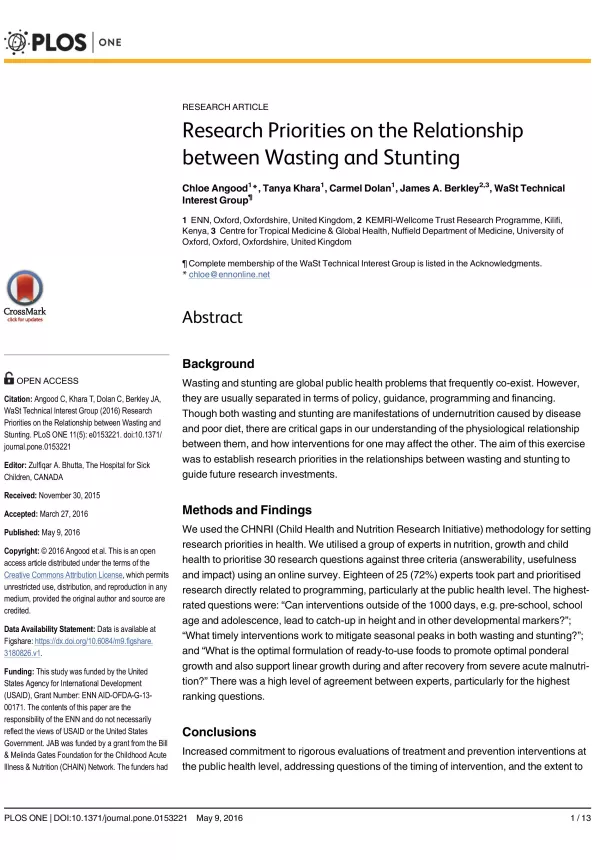Research Priorities on the Relationship between Wasting and Stunting
Publication details
Abstract
Background
Wasting and stunting are global public health problems that frequently co-exist. However, they are usually separated in terms of policy, guidance, programming and financing. Though both wasting and stunting are manifestations of undernutrition caused by disease and poor diet, there are critical gaps in our understanding of the physiological relationship between them, and how interventions for one may affect the other. The aim of this exercise was to establish research priorities in the relationships between wasting and stunting to guide future research investments.
Methods and Findings
We used the CHNRI (Child Health and Nutrition Research Initiative) methodology for setting research priorities in health. We utilised a group of experts in nutrition, growth and child health to prioritise 30 research questions against three criteria (answerability, usefulness and impact) using an online survey. Eighteen of 25 (72%) experts took part and prioritised research directly related to programming, particularly at the public health level. The highest-rated questions were: “Can interventions outside of the 1000 days, e.g. pre-school, school age and adolescence, lead to catch-up in height and in other developmental markers?”; “What timely interventions work to mitigate seasonal peaks in both wasting and stunting?”; and “What is the optimal formulation of ready-to-use foods to promote optimal ponderal growth and also support linear growth during and after recovery from severe acute malnutrition?” There was a high level of agreement between experts, particularly for the highest ranking questions.
Conclusions
Increased commitment to rigorous evaluations of treatment and prevention interventions at the public health level, addressing questions of the timing of intervention, and the extent to which impacts for both wasting and stunting can be achieved, is needed to inform global efforts to tackle undernutrition and its consequences.
